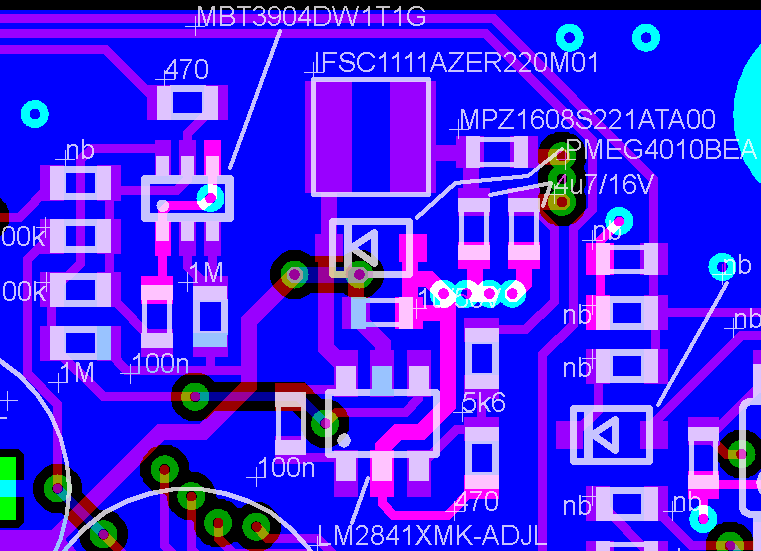Hi,
I just had the third one of these (LM2841XMK-ADJL) blowing up in my application, and I am failing to find the root cause.
It should not be an overvoltage situation, as there is a 28V SMBJ suppressor diode on the input. The capacitive load at the output of the converter is approx 20uF, and current draw is only some tens of mA. I hope that someone can check my design. Here is the schematic:
Cheers
Frank



